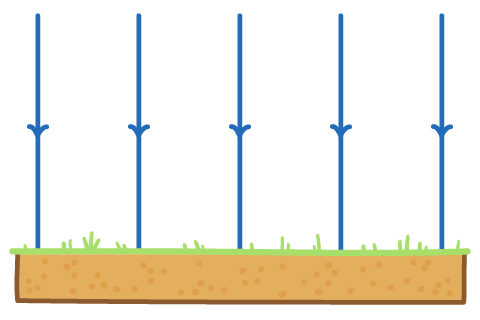Uniform & Radial Fields
This lesson covers:
- Understanding gravitational fields and how they exert forces.
- Using field lines to represent the direction and strength of gravitational fields.
- Assumptions about uniform gravitational fields near planetary surfaces.
Gravitational fields exert attractive forces
A gravitational field is an invisible area around a mass, like a planet or moon, where other masses feel an attraction. This force of attraction pulls objects towards the mass creating the field. Big objects, such as planets, have strong gravitational fields, while smaller objects, like a tennis ball, have very weak fields that are usually ignored.
For instance, the gravitational pull of the Moon and Sun causes ocean tides on Earth. These tidal forces are examples of the effect of gravitational fields on our planet.
Key Points:
- Gravitational fields create attractive forces between masses without physical contact.
- Noticeable gravitational fields are typically produced by large masses.
Representing gravitational fields with field lines
We can visualise gravitational fields using lines that show the path a small object would follow under gravity's influence. These are called gravitational field lines.

Key Points on Field Lines:
- Field lines point towards the centre of the mass creating the field.
- Lines close together indicate a strong gravitational field.
- Lines spaced further apart signify a weaker field.
The illustration demonstrates that moving an object further from Earth causes the field lines to spread apart. This spreading symbolises the weakening of the gravitational force with distance.
Although small masses have their own gravitational fields, these are often so weak that they are insignificant when compared to large bodies like Earth.
Uniform gravitational fields
Close to a large mass, like Earth, the gravitational field lines are nearly parallel to each other. This parallel alignment indicates a uniform gravitational field, where the gravitational force on an object doesn't change much with small changes in height above the surface.

In many situations, assuming a uniform gravitational field is a useful simplification, especially when dealing with objects near the Earth's surface. This assumption, however, becomes less accurate at greater distances from the surface, where the field is no longer uniform.